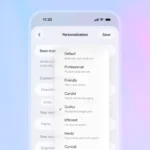
The Power of Rufus: A Complete Guide to Creating Bootable USB Drives on Windows
Rufus is one of the most well-liked and dependable programs for making USB sticks that can be booted on Windows. Rufus makes it easy to set up a new Windows installation, test a separate linux distribution, or make a rescue disc for troubleshooting. Many of its capabilities make it a popular among both beginners and expert users. We will explain in great detail on what to use, how to use it, and why do so many people choose it in this blog article.
What is Rufus?
Rufus is an independent, open-source tool designed to format and create bootable USB drives. It is light, portable, and is capable of working with many different ISO files, including for operating systems such as Windows and Linux. Rufus also supports advanced options such as bootable drives for UEFI and BIOS systems, making its an essential tool for administrators, IT professionals and home users.
The major selling points of Rufus are its speed, simplicity and versatility. It is often praised for being more efficient than other bootable USB construction equipment, and the best part? It is completely free!
Advanced features of Rufus
It is a matter of primary use when creating bootable USB drives, Rufus provide many advanced facilities to customize the process:
Create bootable USB with UEFI/BIOS compatibility:
Rufus can create bootable USB drives that are compatible with both traditional BIOS systems and modern UEFI systems. This ensures that your bootable USB will work on a wide range of computers.
Constant storage for Linux:
For Linux distribution, Rufus supports creating a frequent storage division, which means that you can save data and settings in the reboot when using live Linux USB.
Advanced format option:
Rufus provides advanced formatting options, such as making custom partition plans, specifying cluster sizes, and other file systems tweaks. When you need more control over the bootable USB configurations, these can be easier.
Non-destructive mode:
In rufus, some types of ISO files also have the option to use non-destructive mode when creating bootable USB. This feature helps in cases where you want to avoid wiping the entire USB drive.
How to Use Rufus to Create a Bootable USB Drive
Now that you know why Rufus is so powerful, let’s go through the process of using it.
Download and Launch Rufus
- First, download the latest version of Rufus from the official website.
- The software doesn’t need installation—simply run the executable file to launch the program.
Insert Your USB Drive
- Plug in the USB drive you wish to use for creating the bootable media. Make sure the drive is at least 4GB (for Windows installation) or as required by the OS you plan to install.
Select the Bootable ISO
- Under the Device dropdown menu, select the USB drive you want to use.
- In the Boot selection section, click SELECT and browse for the ISO file of the operating system you want to install. This could be a Windows ISO, a Linux distribution ISO, or any other bootable image.
Choose the Partition Scheme and File System
- Partition Scheme: You’ll need to choose between MBR (Master Boot Record) and GPT (GUID Partition Table). MBR is more common for older BIOS-based systems, while GPT is required for newer UEFI systems.
- File System: Depending on the size of the ISO and what you’re creating, you can choose FAT32 or NTFS. Rufus will automatically suggest the appropriate file system.
Start the Process
- Once you’ve made the necessary selections, click START. Rufus will warn you that all data on the USB drive will be erased, so make sure to back up any important files
Step 6: Wait for Completion
- Rufus will now format the USB drive and copy all necessary files from the ISO to make it bootable. The process may take several minutes depending on the size of the image and the speed of your USB drive.
- Once complete, you’ll receive a notification that the bootable USB drive is ready to use.
Technical Specification
License
Free
Version
4.6
Latest Update
21/10/2024
Operating System
Windows
Developer
Total Downloads
1M
License
Free
Version
4.6
Latest Update
21/10/2024
Operating System
Windows
Developer
Total Downloads
1M
Screenshot

- Positive
- Free and Open Source.
- Lightweight and portable.
- User-friendly interface.
- Support a wide range of ISO files.
- No Internet connection required.
- Negative
- It’s not available for Linux and Mac.
- Limited to USB drives.
- Potential for data loss.





